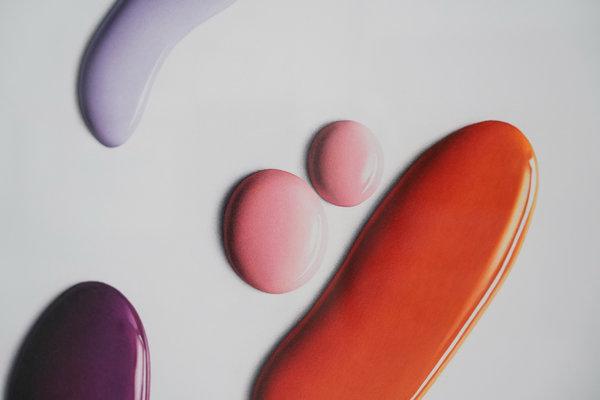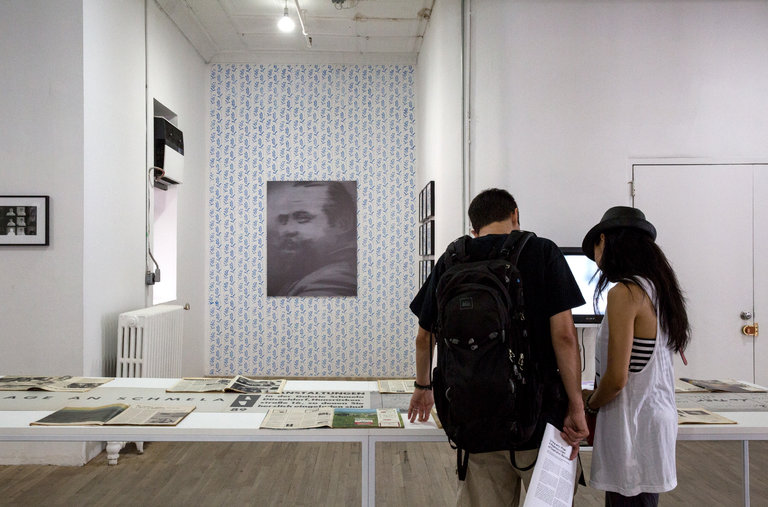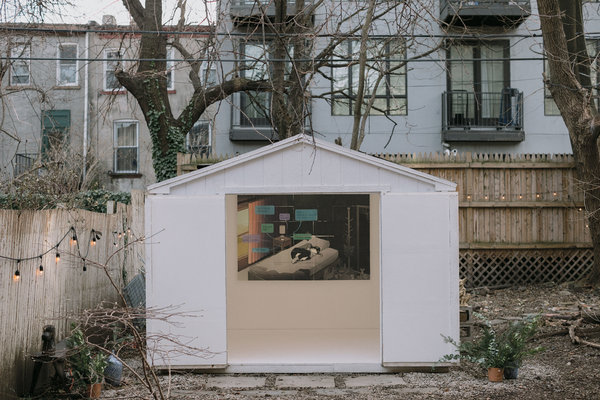Let’s say you’re scrolling through Instagram. That tantalizing green salad? You’ll fly by it. Ditto the photo of the mysterious-looking woman on the beach or that candid shot of a friend of a friend. Oh, and look — a puppy.
Then your thumb stops, mid-scroll, on a work by Cj Hendry. The image has left you dumbfounded: Her pencil and pen sketches are so meticulously detailed they look like photographs.
“This is a pencil drawing can you believe?” one of her Instagram followers wrote.
Another commented: “Holy moly! Bloody awesome!”
Ms. Hendry, 31, is what you might call an Instagram artist — someone who started on, and thrived because of, the platform we so love to hate and hate to love. You won’t find her collection in a gallery. Instead, she hosts her own solo exhibitions, and regularly sells out her works, which have price tags as high as $250,000. It’s an example of how an artist can survive — prosper — outside the established art world, thanks to social media.
On a platform flooded with ephemeral images, her uncanny drawings — with each ridge or fold or glossy surface commanding attention — are jaw-dropping, stop-and-stare-for-a-second mind tricks. “People still can’t get their heads around it,” Ms. Hendry said during a recent interview at her studio in the Greenpoint section of Brooklyn.
Her technical skill is undeniable, yet her success can be attributed to her accessibility. On her Instagram account, she posts work-in-progress snippets, letting her followers in on her journey — a bit of a novelty in the art industry.
“It’s almost like you have deeper knowledge of these pieces when you buy them than you would if you just bought something from a gallery,” said Ben Kaufman, chief marketing officer at BuzzFeed, who discovered Ms. Hendry on Instagram and owns two of her drawings. “You can kind of watch them take shape through her Stories and through her posts.”
She goes a step farther with her shows, weaving all those elements together to create immersive installations. For her latest, “Rorschach,” opening on April 10 in Dumbo, Brooklyn, she has created a bounce house designed to look like the inside of a mental hospital. (It has white padded walls.)
“It’s not just really her art, it’s how she creates this multifaceted approach that layers outside disciplines and tactics together,” said Rachel Shechtman, founder of the New York City retail concept store, Story, which changes offerings every month based on a theme.
Ms. Hendry’s improbable path started in November 2012 when she posted her first drawing on Instagram. At the time, she had dropped out of architecture school in Brisbane, Australia, where she grew up, and was struggling to make it through the fifth year of a three-year finance degree program. So she turned to art.

A detail of “Resin Blobs” (2018), created in collaboration with Christian Louboutin in 2017.CreditRebecca Smeyne for The New York Times
“In my head I thought, I’m going to build a portfolio and make it into a beautiful book and then send that to galleries because that’s how things work in the art world, isn’t it?” she said.
She drew objects in black and white: a pair of patent-leather Yves Saint Laurent men’s dress shoes, a basketball, alphabet balloons, a crumpled up $100 bill with Kanye West’s face, a pair of snakeskin boxing gloves, an Hermès Birkin bag. The series placed objects from a capitalist-fueled fantasy on a pedestal, pushing viewers to reflect on the inherent shallowness that they represent.
She quickly built a following, and within months, made her first sale — a 40-inch-by-60-inch pen drawing of a pair of R.M. Williams boots for $10,000. Her client had discovered it on Instagram and reached out to her.
In 2017, she switched to color, nudged into the rainbow by what she said was her first, and only, collaboration with a brand, Christian Louboutin, around Art Basel Hong Kong. She drew dollops of paint for the show, each one so richly textured it seems as though you could run your finger through the gloop.
Time-lapse over 25 days of artist Cj Hendry working on “A Beautiful Mind,” 2019 in her Brooklyn Studio.
Then last spring Ms. Hendry financed her first major solo exhibition, “Monochrome,” for which she drew a series of crumpled up Pantone cards and created an interactive space around them at a Brooklyn warehouse. The seven rooms were each themed around one particular color. The pink room, for example, had a carpet, a dresser and a chair in different shades of pink and her drawings of pink cards decorating pink walls. Every corner was as detailed as her drawings, and she paid for all of it: no representative, no gallery, no sponsor — not even an entrance fee.
In September, Ms. Hendry — spurred by a possible copyright infringement case for seeking to profit from her sketches of Andy Warhol’s Polaroids of Jean-Michel Basquiat and other figures — decided to give away her work as part of a scavenger hunt. She dropped off bright red boxes, which contained T-shirts that bore prints of her artwork, at random locations around Manhattan, and posted pictures of their locations on her Instagram Stories. Her followers pounced.
Now Ms. Hendry is preparing for the “Rorschach” show, which she views as an attempt to step into the more traditional art world. She’s recreated Rorschach tests by randomly squirting paint onto a page and then drawing those colorful, beautiful blobs. “It’s a fascinating combination of sinister and playful,” she said. “People are going to see something different every time.”
She knows that many art critics and art world figures tend to be dismissive of Instagram artists and of realism, but she is still seeking a stamp of approval from that industry.
“The beauty of Instagram is that it’s a platform that provides extreme visibility,” said Mark Rosen, associate director of marketing at Artsy, a platform that helps galleries, collectors, auction houses and art fairs discover, buy or sell work online. Mr. Rosen helped Artsy develop its own social media strategy.
“So if an artist is an ‘Instagram native’ or really developing their brand as an artist exclusively on Instagram, they go viral or gain a lot of traction, there’s no doubt that the traditional art world is aware of that.”
Ms. Hendry, who cites Robert Longo as a “big, big, big inspiration,” said that for a couple of years she was “trying to figure out how I could flip realism on its head.” Mr. Longo, who broke into the art circuit in the early 1980s, also draws photorealistic images in black and white using charcoal. His images — of humans dancing, the planets, an atomic bomb explosion, a shark — all point at the imperfection and impermanence of human existence. In other words, he flipped realism on its head.
“I think Instagram is a good platform to show how you’re doing what you’re doing,” Ms. Hendry said. “But museums will always be around. There’s longevity, there’s elegance, and there’s something very formal and traditional about it.”










